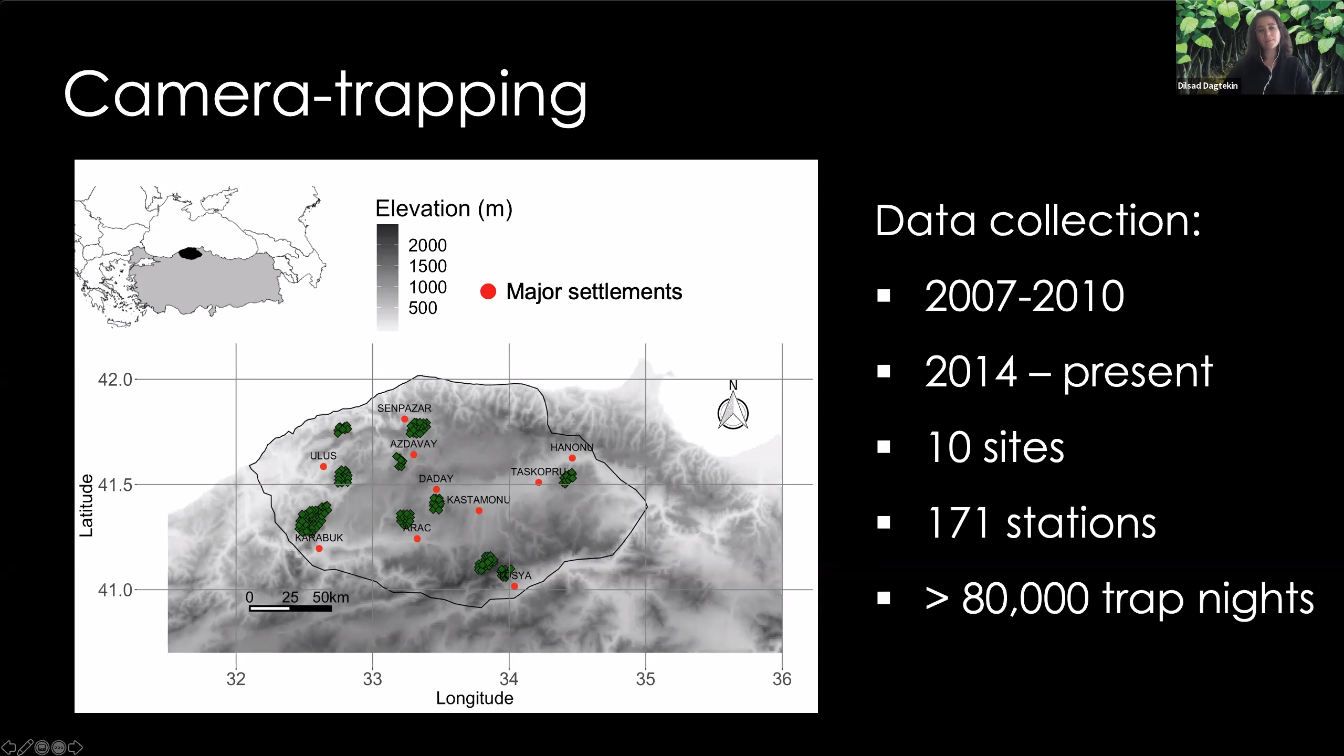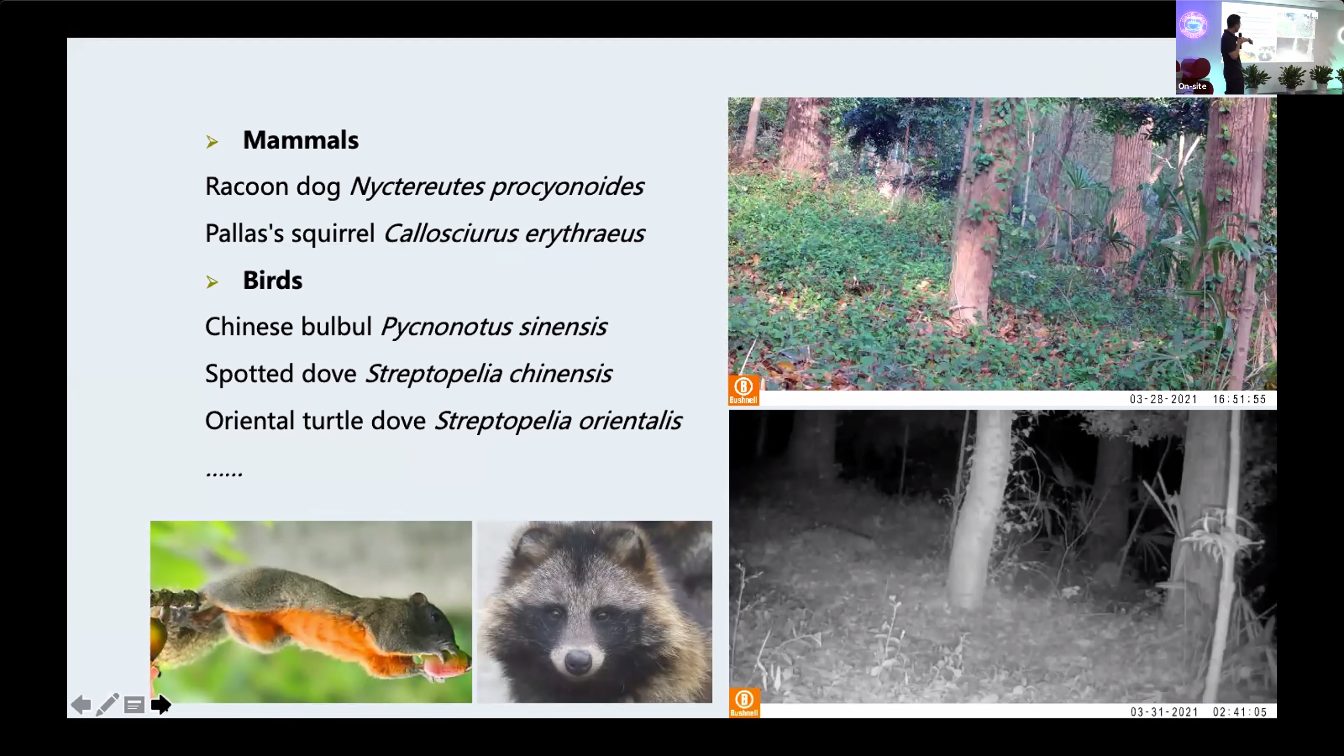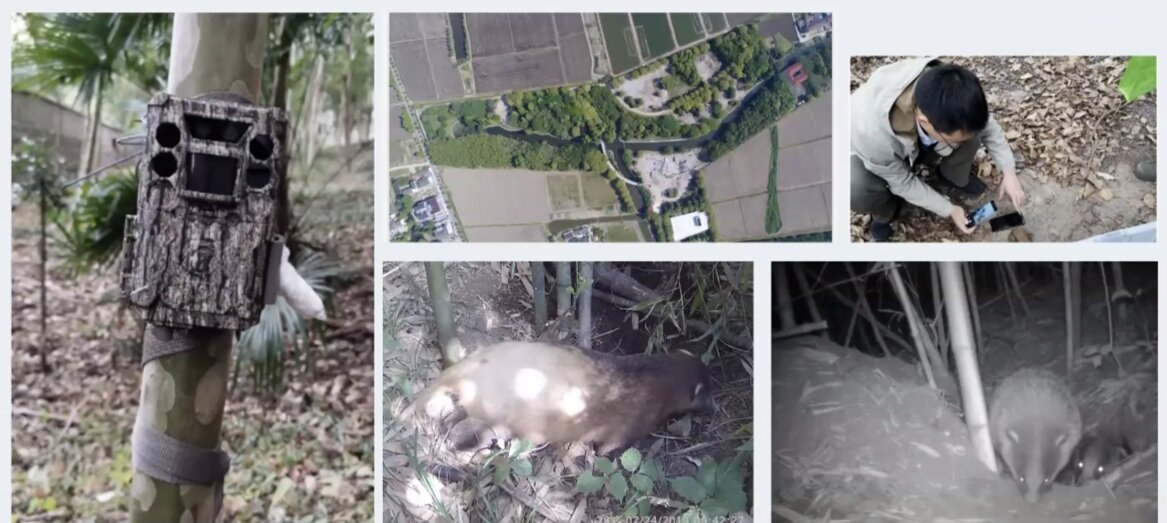By Kathy Ruoran Li, Junior Project Manager, Art-Science
On September 16, 2021, Swissnex in China was delighted to present the 29th Café des Sciences: Wildlife Through the Lens, featuring Dilsad Dagtekin and Dr. Bicheng Li. This special edition stems from a relationship that can be traced back to September 2020, when Swissnex in China facilitated the collaboration between the University of Zurich’s “Triggered by Motion” project and the Shanghai Natural History Museum, which now hosts one of the project’s camera trap sites.
Dilsad Dagtekin, our first speaker, is a PhD Student in the Department of Evolutionary Biology and Environmental Studies at University of Zurich. “Triggered by Motion” project has set camera traps in 14 countries and has established an international network of researchers and citizen scientists, and Dagtekin’s research utilizes one of those cameras set in Northwestern Turkey. She translates the on-camera sightings into data sets and incorporates three different modeling approaches with increasing complexity based on the data resolution, to study how seasonal fluctuations affect different populations of several predator-prey animal pairs.
One of the goals of Dagtekin’s research is to help develop evidence-based conservation based on concerned species’ demography, habitat preferences, distribution, and behavioral decisions such as movement. All of which can be affected by resources such as water and food availability, shelter and cover needs, as well as disturbances such as external factors and inter-species interactions. Species try to adapt to these strong external factors with different demographic strategies. It has been long recognized in the population ecology field that seasonal cycles can cause variations in overall animal population dynamic, but since most data were collected at annual steps, making environmental perimeters look constant within each year. Eventually, these flaws in traditional data collecting would lead to misguided conservation efforts.
To understand how seasonality affect species co-occurrence patterns, Dagtekin and her team used camera-trapping to track seasonal changes throughout the year. Then, they apply occupancy models, in both static and dynamic approaches, to analyze the data of 7 predator and prey pairs in the region.
One of the important results that come from Dagtekin’s research is that different prey species give different responses with the same predator. This is expected because all the prey species have different coping mechanisms. However, from the seasonality perspective, it emphasizes inter-species seasonal variations, which is easily overlooked by similar types of studies when there are only one or two focus species in the region when there are much more species.
“Triggered by Motion” is an ongoing project that continues to generate data that allow more future studies. Dagtekin’s research hinted that human population density also affected predators’ occurrence either directly or indirectly through the prey, which can be investigated more in the future with incoming data.
Next, Dr. Bicheng Li introduced he and his team’s participation in the “Triggered by Motion” project. Dr. Li is a researcher at the Shanghai Natural History Museum, he is engaged in animal population ecology and conservation biology research, with a focus on the impact of urbanization on animal community structure and tiny animal populations. Dr. Li’s team installed camera traps at Tianmashan Forest Park in rural Shanghai and keep them running for one year. As a result, they’ve collected more than 8,500 videos totaling 36 hours in length. All videos are stored on a cloud storage services and can be easily accessed.
Far from many people’s perception, Shanghai is not just a metropolitan inhabited by human. As Dr. Li’s research has shown, our daily life is not that distant from wild animals as one might think. More than 10 species were recorded, including Racoon dog, pallas’s squirrel, Chinese bulbul, spotted dove, oriental turtle dove, and many others.
After giving a brief introduction to Shanghai’s geological history, Dr. Li introduced various species that can be spotted in the region, including waterbirds, frogs, and Macaque (Macaca mulatta) – a monkey species that lives only in Dajinshan island in Jinshan District of Shanghai. Dr. Li and his team wanted to know how many macaques live in the region, so they set up 30 camera traps and took about 250,000 pictures. With such volume of recorded images, the team was able to recognize the different monkeys by using of the face characteristic, body size, and others.
a gridded chart of Dajinshan Island
In addition to camera traps, Dr. Li and his colleagues have conducted numerous field surveys throughout the city over the past six years. Their work includes using geolocator to monitor population change of barn swallows in Qingpu District, Shanghai, monitoring local badger by investigating badger caves and setting up camera traps in Fengxian District, Shanghai.
During the Q&A session, audience showed interest in the camera trap technique and its role in biodiversity study, as well as public engagement in wildlife protection and management. If you have further questions for our speakers regarding their work, please email us at artscience.china@swissnex.org. We will try our best to forward them to our speakers.
Click here to watch the recording of the event.








